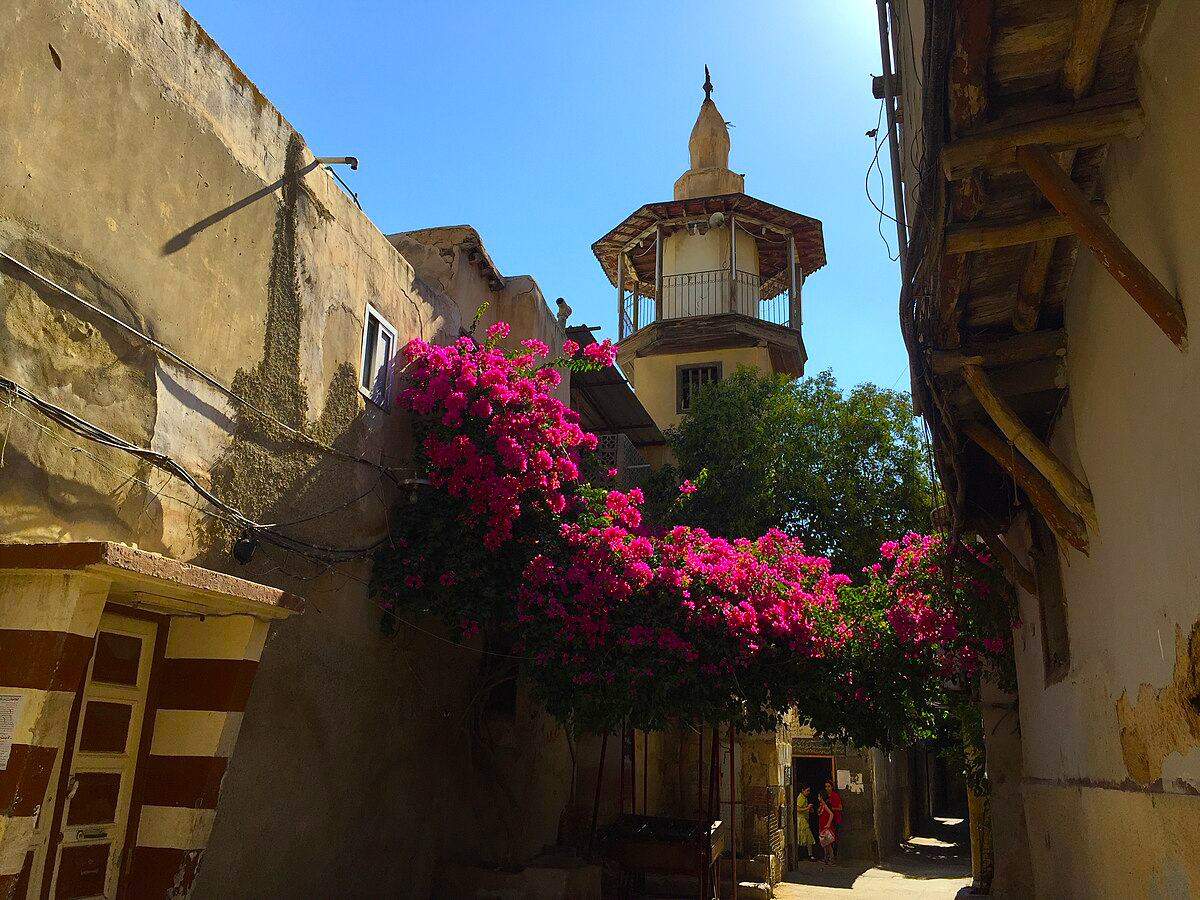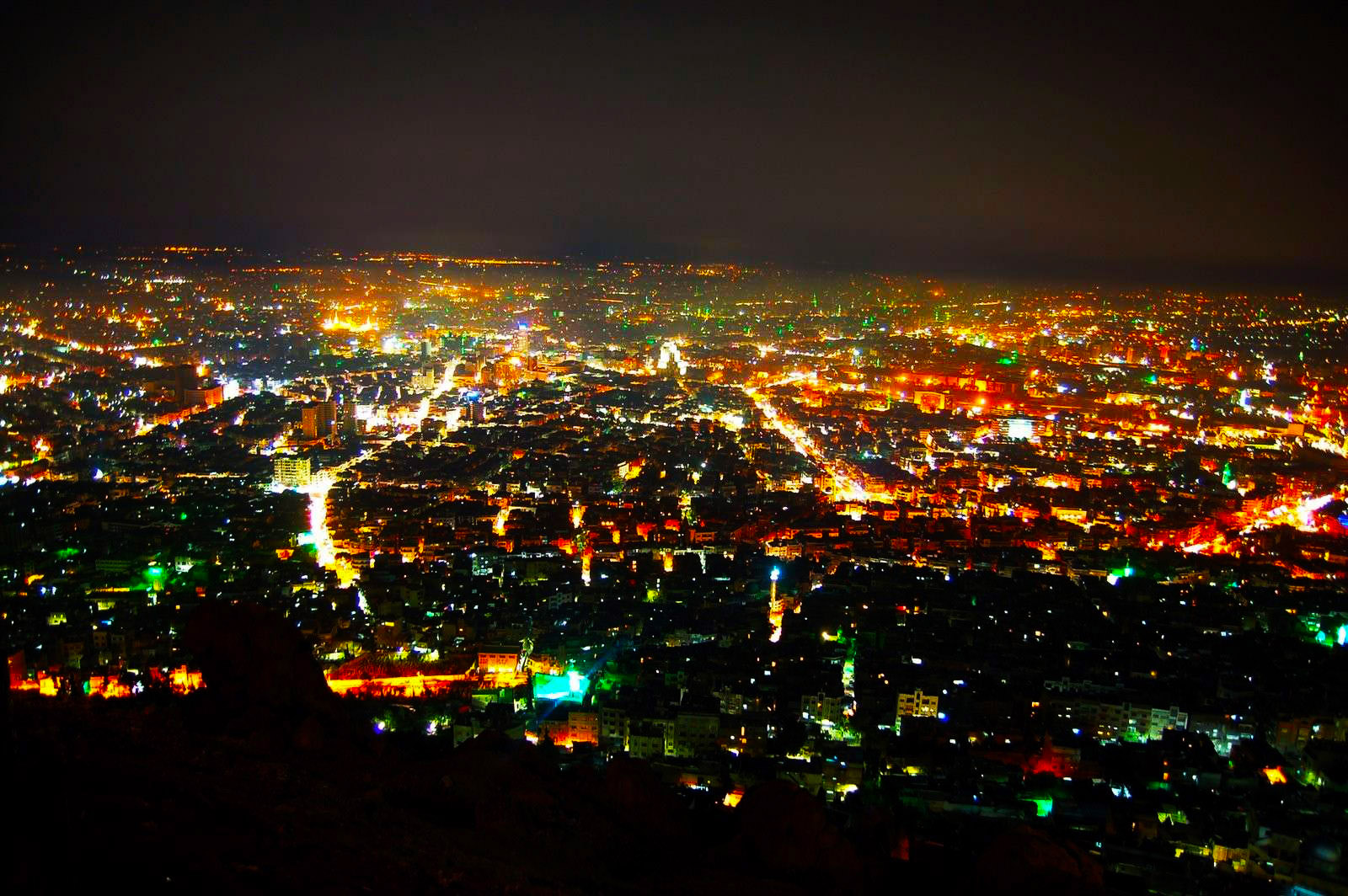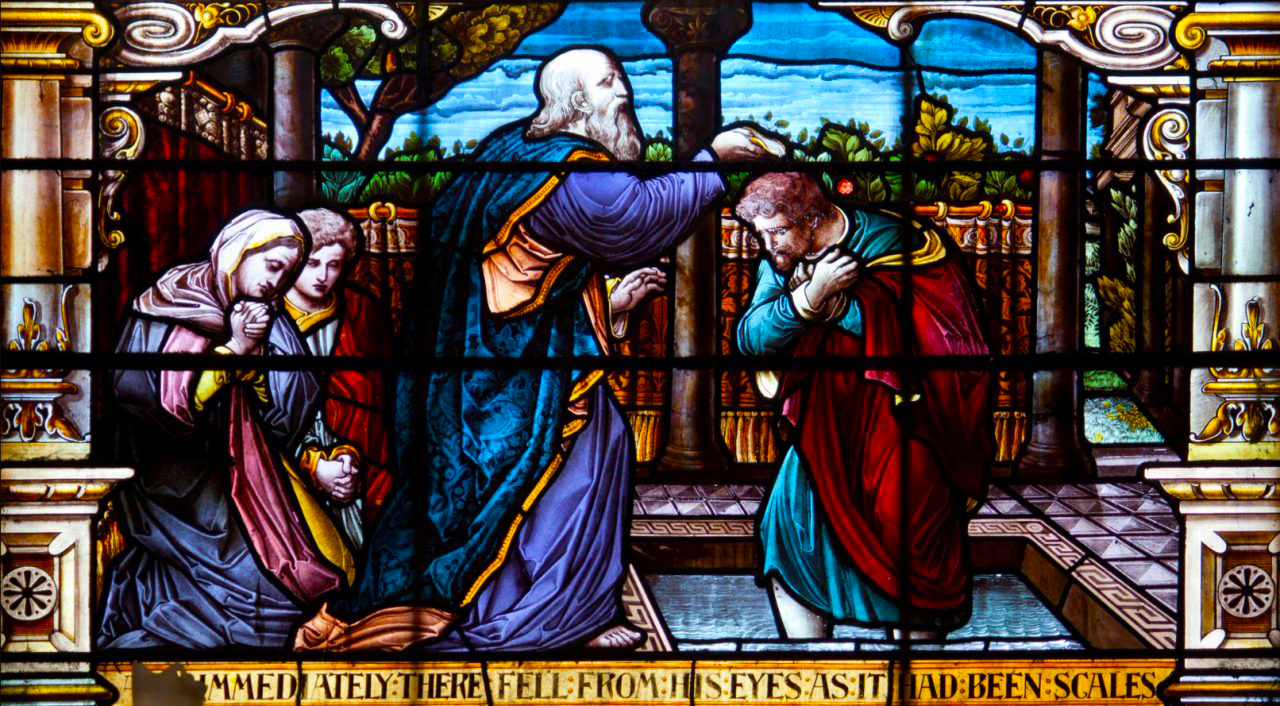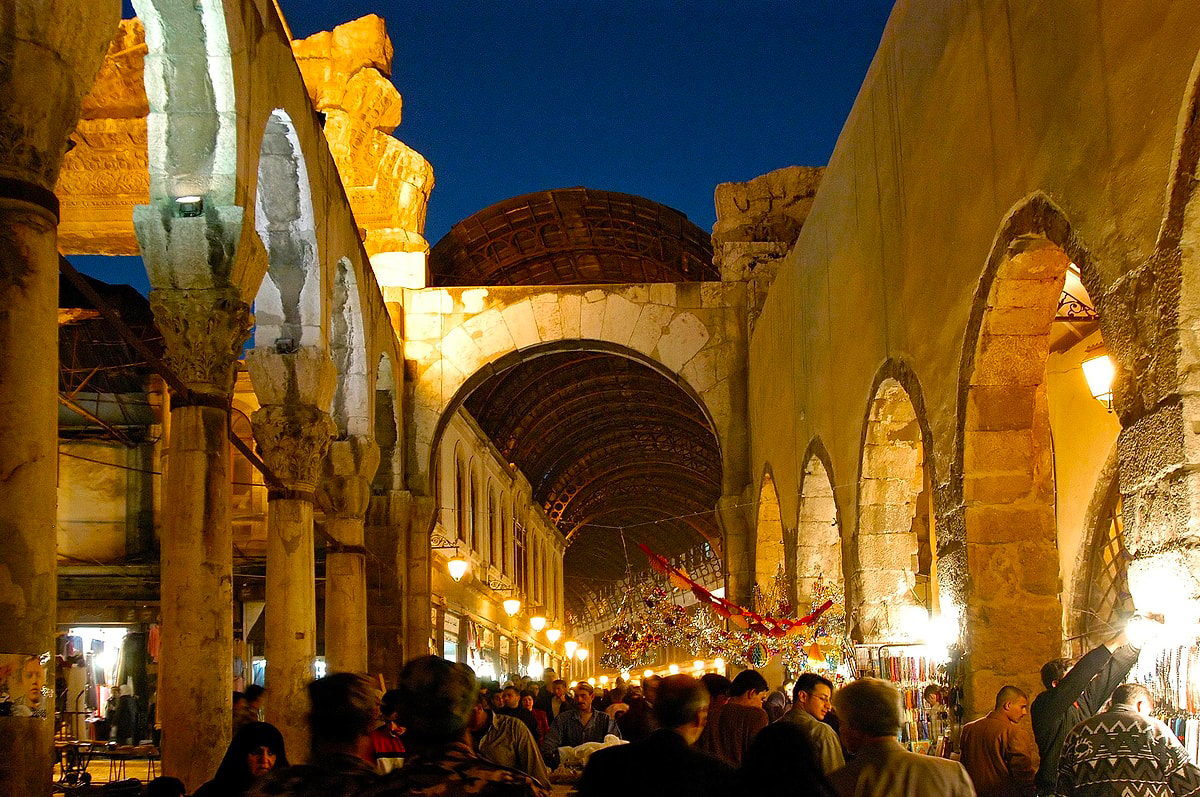| Souk Name | Location | What to Find | Highlights |
|---|---|---|---|
| Souk al-Hamidiyah | Near Umayyad Mosque | Clothes, scarves, sweets, souvenirs | Most famous souk in Damascus; covered arcade with Roman ruins |
| Souk al-Bzourieh | Behind Umayyad Mosque | Spices, herbs, traditional medicine, dried fruits | Strong scents, colorful displays; historic spice market |
| Souk al-Harir | Near Midhat Pasha Souk | Silk fabrics, textiles | Once famous for high-quality Damascene silk |
| Souk al-Qasabiyyin | Near Umayyad Mosque | Walking canes, sticks, handcrafted wood items | Niche market known for handmade walking sticks |
| Souk Midhat Pasha | Parallel to Straight Street | Textiles, clothes, household goods, antiques | Longest souk in Damascus; named after Ottoman governor Midhat Pasha |
Souk al-Hamidiyah
Souk al-Hamidiyah is the largest and most famous market in Damascus, located next to the Roman Arch and leading directly to the Umayyad Mosque. Covered with a high iron roof pierced with bullet holes from the French Mandate era, it’s a bustling avenue of shops selling clothes, scarves, perfumes, sweets, and souvenirs. Don’t miss tasting the famous Bakdash ice cream, a local tradition since the 19th century. It’s the perfect place to soak in the energy of Old Damascus, meet locals, and pick up quality handmade goods, fabrics, or gifts while admiring remnants of Roman columns and Ottoman architecture.
Souk al-Bzourieh
Hidden behind the Umayyad Mosque, Souk al-Bzourieh is one of Damascus’s oldest and most aromatic markets. It’s the go-to place for spices, herbs, dried fruits, rose water, and traditional remedies. The narrow, fragrant alleyways are filled with history and sensory delight. Locals shop here for authentic Syrian ingredients, and many stores are family-run for generations. The air is thick with the scents of cinnamon, cardamom, and jasmine. This market is also home to historic khans (inns), like Khan As’ad Pasha, and offers a deep dive into Damascus’s culinary and herbal traditions. Ideal for food lovers and culture seekers.
Souk al-Harir
Souk al-Harir, or the Silk Market, is a quieter but historically rich part of Damascus’s commercial life. Located near Souk Midhat Pasha, it was once a center for the silk and textile trade, reflecting the city’s reputation for fine weaving. Though smaller today, it still houses vendors selling silk, brocade (Damask), and luxurious fabrics, much of it handmade. The souk represents Damascus’s long tradition of textile craftsmanship and trade along ancient caravan routes. It’s perfect for those looking to buy authentic Syrian cloth or see where nobles and traders once shopped for fine silks centuries ago.
Souk al-Qasabiyyin
Souk al-Qasabiyyin is a small, specialized market near the Umayyad Mosque, famous for its handcrafted walking canes (qasab) and wooden accessories. The souk’s name comes from “qasab,” meaning cane or reed. It’s a fascinating place to explore Syrian woodcraft traditions, with artisans producing everything from decorative sticks to practical walking canes, often with intricate inlays. Though not large, it’s a unique cultural stop, offering insight into a niche craft passed down through generations. Many of the items sold here are handmade and make memorable, functional souvenirs or collector’s items that reflect Syrian craftsmanship.
Souk Midhat Pasha
Souk Midhat Pasha is one of the oldest continuously used markets in the world, running parallel to the ancient Straight Street (Via Recta). It’s named after Ottoman governor Midhat Pasha and stretches for over 1 km through Old Damascus. You’ll find a mix of clothing, textiles, housewares, antiques, and traditional sweets. Its historic stone-paved path and arched ceilings offer an atmospheric experience of ancient commerce. With shops selling embroidered garments, brassware, and handmade soaps, it’s an excellent place to explore daily Damascene life and shop for authentic goods while walking a path that dates back to Roman times.
How to Reach the Markets
All five markets are located in or around Old Damascus, within walking distance from each other. The easiest way to enter is through Bab al-Jabiya or Bab Sharqi, the old city gates. Souk al-Hamidiyah is right next to the Citadel and leads to the Umayyad Mosque. From there, Souk al-Bzourieh and Souk al-Qasabiyyin are just behind the mosque. Souk al-Harir and Souk Midhat Pasha run parallel to Straight Street, easily accessible from any point inside the old city. Taxis can drop you at the main gates, and all markets are best explored on foot.



